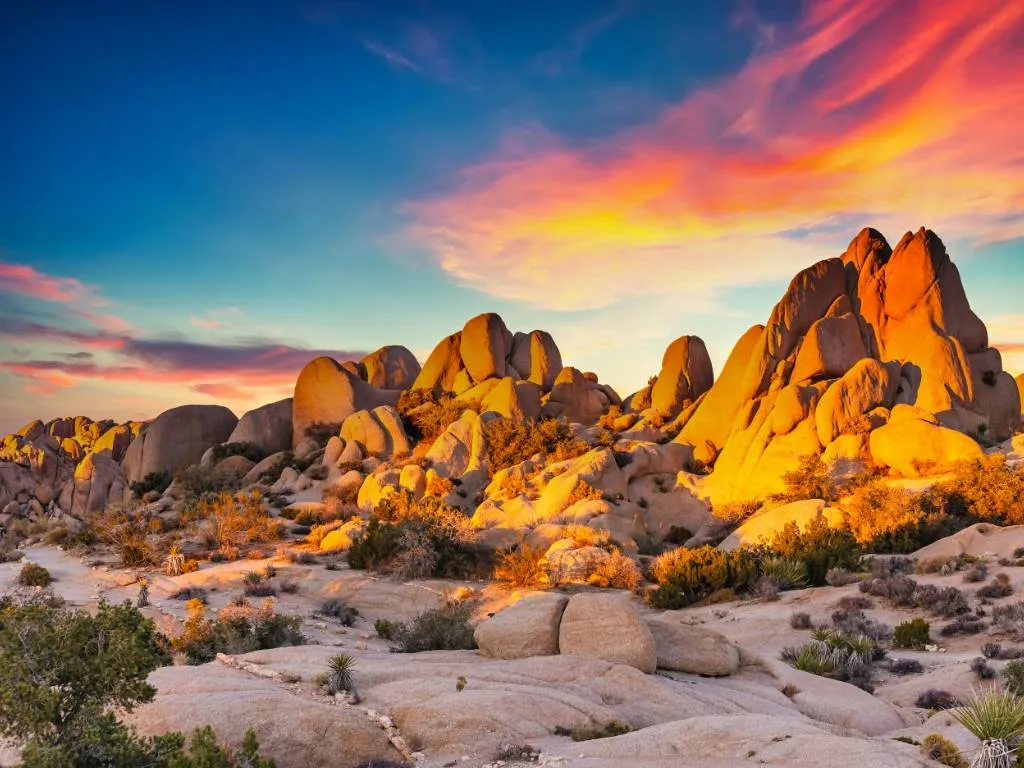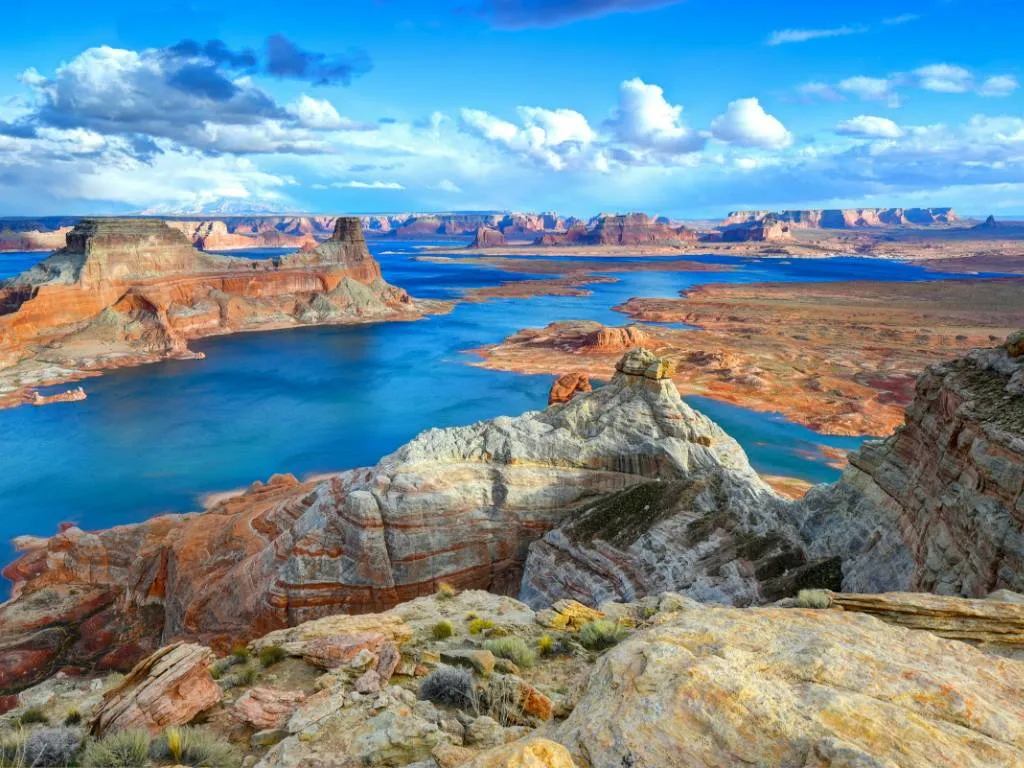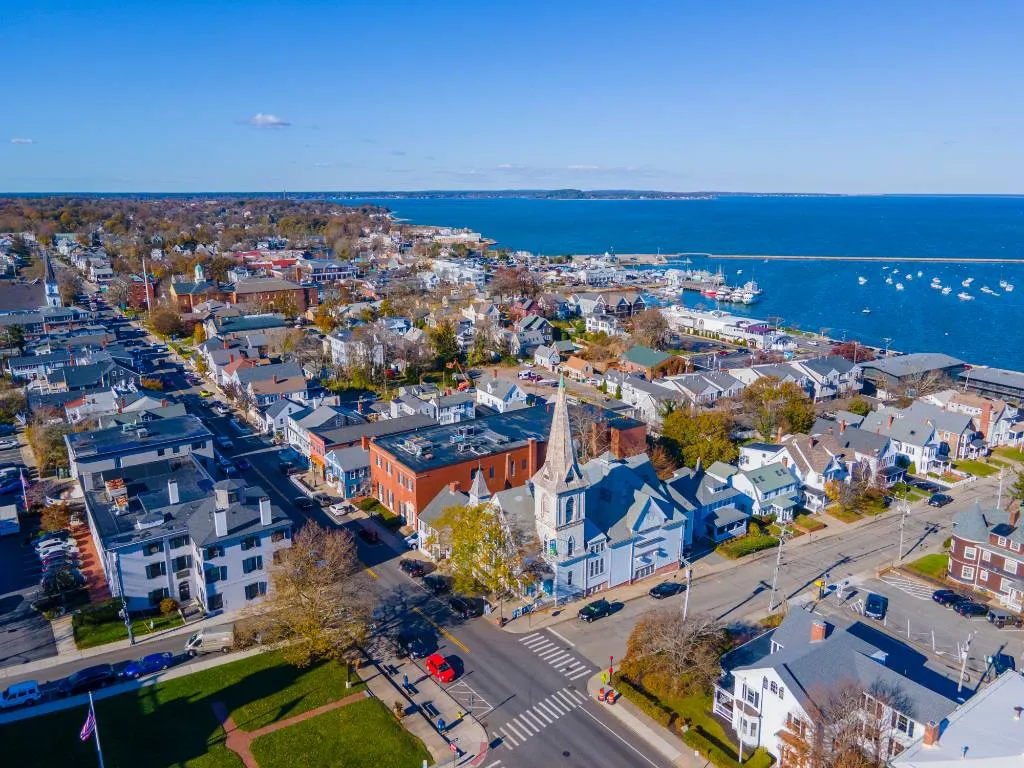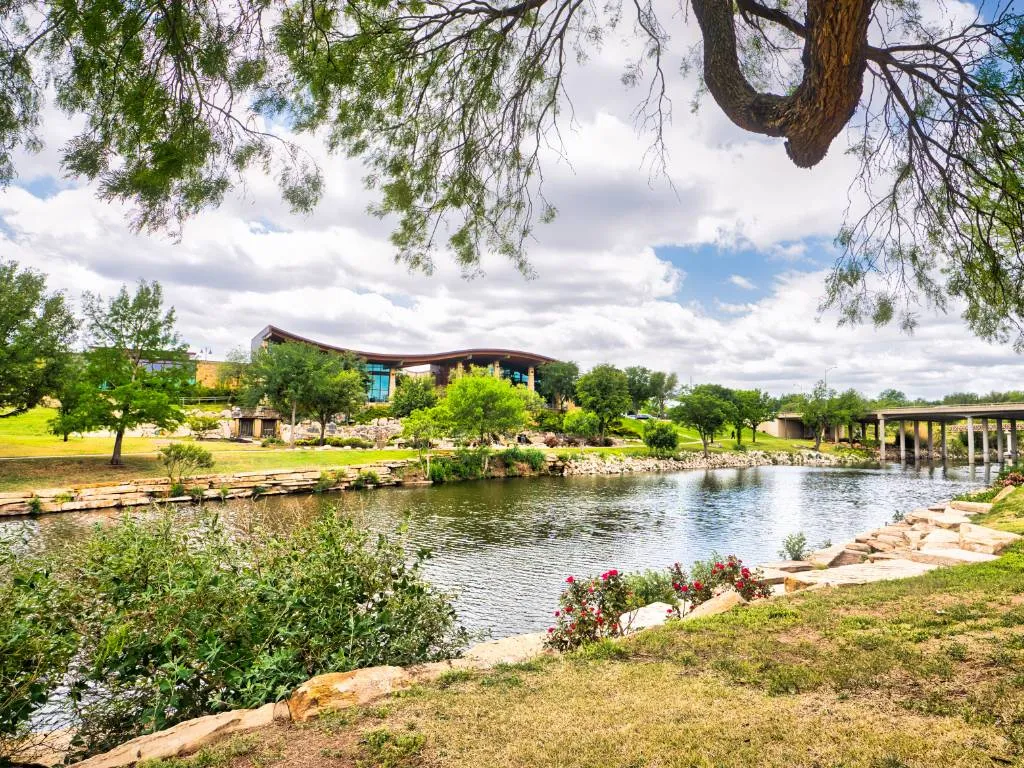10 Things to Know Before Moving to Joshua Tree, CA

Known for its funky desert charm and the iconic Joshua trees that dot its landscape, Joshua Tree has long attracted free spirits, artists, and outdoor enthusiasts. This high desert community in San Bernardino County has seen rapid growth as more people are drawn to its natural beauty, pleasant climate, and small-town vibe.
Before joining the eclectic community of Joshua Tree, there are some key facts to know from the cost of living to entertainment options. This guide covers ten essential things to learn before calling Joshua Tree home.
1. The cost of living is 28% lower than California’s average
Joshua Tree has a lower cost of living than both California and the rest of the country. A single adult can get by on $36,159 a year, which is less than the $45,534 average for the state and $38,433 for the country as a whole. The median home price is $378,718.
Undoubtedly, Joshua Tree’s cost of living remains affordable compared to large California cities.
2. The weather is hot in Joshua Tree
Joshua Tree has a desert climate with very hot summers and mild winters. Summer highs average over 100°F from June to September. Winters are cool with averages from the mid-40s to the low 60s.
Rainfall is minimal at just 3 inches annually. The arid climate attracts those seeking dry heat and can be an adjustment from coastal weather.
3. Limited access to entertainment and modern amenities
Lying within the Mojave Desert, Joshua Tree is extremely rural with a low population density even for the High Desert region. The latest census data shows just over 7,500 residents in Joshua Tree itself. While beautiful and scenic, the remote location means services, dining, shopping, and entertainment options are very limited compared to more urban areas. Only basic necessities like gas stations, small grocery stores, hardware shops, and cafes exist in Joshua Tree. Larger grocery chains, department stores, medical specialists, banks, and other services are lacking given the tiny population and require day trips to fully-served communities.
Residents must plan accordingly and adjust expectations when moving from a metro area. The nearest sizable incorporated town is Yucca Valley, located about 20 minutes away, which provides most modern suburban conveniences. However, larger cities like Palm Springs and San Bernardino may still be required for things like upscale dining, major medical care, extensive shopping, and international airport access.
4. Joshua Tree National Park is a major attraction in the city
Rock climbing at Joshua Tree National Park is considered world-class, attracting climbers from around the globe. The park encompasses over 790,000 acres and contains hundreds of unique rock formations and boulder groupings that create an otherworldly climbing experience.
Hiking trails wind through the forests, and the park offers exceptional stargazing opportunities thanks to its designated Dark Sky status and minimal light pollution. Camping is available within the national park as well as on surrounding BLM lands. Joshua Tree National Park is the crown jewel of outdoor attractions.
5. A higher-than-average rate of crime
The crime rates of Joshua Tree are higher than the national average, both in terms of violent crime and property crime. At 24.6 percent, Joshua Tree’s violent crime rate is greater than the national average of 22.7 percent.
Also, compared to the national average of 35.4, Joshua Tree’s property crime rate is 41.8. The people living in Joshua Tree should perhaps pay closer attention to their personal safety and security in light of this.
6. Educational options are limited
Public schools in Joshua Tree are part of the Morongo Unified School District which has received recognition but options are minimal with only one elementary, middle, and high school in the entire district. Some families choose to homeschool their children or send them to private schools located in Yucca Valley.
There are a few small alternative learning programs available within the Joshua Tree community such as the Joshua Tree Elementary Independent Study Program. However, overall access to high-quality education requires a decent drive to either Yucca Valley or Twentynine Palms. Educational opportunities are quite limited compared to more populated areas.
7. The job market is limited
The job market is extremely small and local in Joshua Tree with few major employers aside from retail/hospitality, healthcare, education, and social services. Many residents are self-employed as artists, musicians, craftsmen, contractors, and other types of small business owners. A fair number also work remotely for companies located in other areas. However, those seeking traditional full-time jobs will find opportunities lacking within Joshua Tree itself.
The slightly larger job markets in the nearby communities of Yucca Valley and Twentynine Palms offer more options, particularly in the healthcare field. Overall, Joshua Tree itself has minimal jobs, and prospective residents need flexibility and resourcefulness to make the employment situation work.
8. Go grocery shopping at Joshua Tree Farmers Market
As mentioned above, dining choices in Joshua Tree consist almost entirely of locally-owned eateries like family restaurants, cafes, and coffee shops. Only a handful of fast-food chain options exist in town.
Grocery stores include a Stater Bros, Natural Sisters health food store, and Hi-Desert Market. The weekly Joshua Tree Farmers Market provides an additional source for fresh, locally-grown produce. Residents wishing for more variety in the dining scene must travel to Yucca Valley or beyond. The remote location makes eating out and grocery shopping a challenge which requires thoughtfulness and planning.
9. Check out the Joshua Tree Art Gallery and the Noah Purifoy Outdoor Desert Art Museum.
Joshua Tree has a thriving arts scene and culture despite its small size and remote location. Multiple galleries located in town showcase works by local artists across mediums including painting, sculpture, photography, and jewelry. Popular galleries include the Joshua Tree Art Gallery and the Noah Purifoy Outdoor Desert Art Museum.
Community events supporting the arts include seasonal art studio tours, weekly farmers markets filled with local artisans, and annual festivals like the Joshua Tree Music Festival and the Joshua Tree International Film Festival. The Joshua Tree Inn, located steps from the National Park entrance, frequently hosts indie and alternative music performances in its intimate venue. Overall, creativity and artistic expression are core to the culture.
10. Joshua Tree is an unconventional community
At its core, Joshua Tree prides itself on creativity, free-thinking, and welcoming all types of people. It has historically drawn artists, hippies, bohemians, and others looking to live free-spirited unconventional lives. Locals describe it as a uniquely tolerant, open, and accepting place where people can truly be themselves without judgment.
The quirky, eccentric vibe and funky aesthetic attract certain free-wheeling personalities. However, more conventional or conservative types may find the anything-goes community character challenging to assimilate into. Joshua Tree celebrates individualism in all its weird and wonderful forms.
In Conclusion
Moving to Joshua Tree, CA, offers both advantages and challenges. The lower cost of living and the unique beauty of Joshua Tree National Park are significant draws. The thriving arts scene and the unconventional, open-minded community add a distinct flavor to Joshua Tree.
However, residents of Joshua Tree must contend with limited amenities, a higher-than-average crime rate, and a small job market. The educational options are limited, and accessing diverse dining and shopping choices often requires travel to nearby towns. Potential residents should carefully weigh these factors and consider their preferences and priorities before making the move to this eclectic desert town.






